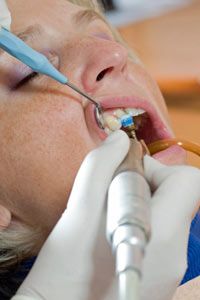Since the first at-home whitening system was released to Americans in 1989, the U.S. has sought and bought whitening products with vigor, making teeth whitening one of the most popular cosmetic dental procedures in the country. In fact, Americans spent $1.4 billion in 2006 on at-home, over-the-counter teeth whitening products such as whitening strips, tray, gels, rinses and toothpastes [source: Mapes]. Why are white teeth so important to us? Most people would agree that a good smile tips the scales favorably for us socially. We believe in the power of a white smile to not only make us look younger, but to also make us more attractive to potential mates and more successful in our careers. That's a lot of responsibility for teeth.
As we age, our teeth naturally begin to become stained or darken. What we eat and drink affects the color of our tooth enamel, often giving teeth a yellow tint. But it's not just our morning coffee or evening glass of cabernet sauvignon that are to blame. Certain antibiotics, illnesses and our genes also play a role in how white our pearly whites are.
Advertisement
There are a few types of whitening systems available to fix the problem. At-home, over-the-counter bleaching kit options include strips or trays, or there are also special whitening toothpastes and mouthwashes that promise to polish stains away. Dentists offer additional in-office tooth whitening options, including custom-made take-home trays and in-office laser treatments.
No matter which you choose, you're likely to see some whitening results. If a product contains bleach (peroxide), it will whiten your teeth. But not all treatments are created equal. It's the concentration or percent of hydrogen peroxide a teeth-whitening system contains and the amount of time it's in contact with your teeth that determines its effectiveness. While at-home kits are safe for adults as long as you follow directions, treatments under the supervision of your dentist are often more powerful than available at-home kits, and offer more safety measures such as oral and gum protection than over-the-counter kits. Your dentist or dental hygienist can offer the best advice for whitening your smile.
Despite how safe it seems, is tooth whitening safe for everyone? Let's look at the side effects and drawbacks of the process, as well as why there is a recommended age requirement.
Advertisement

